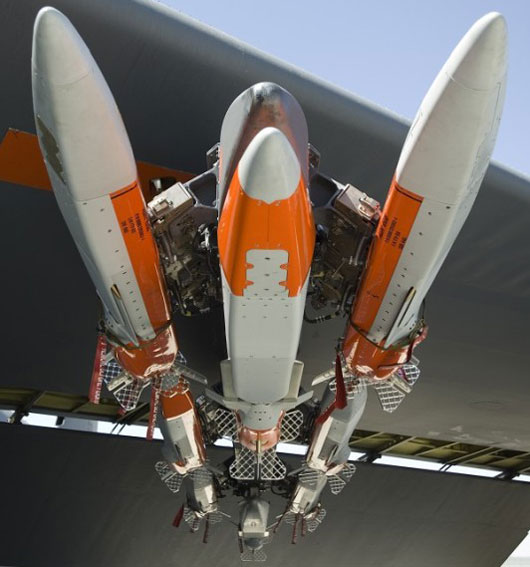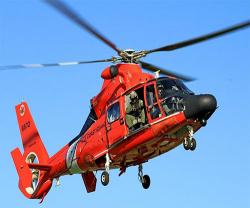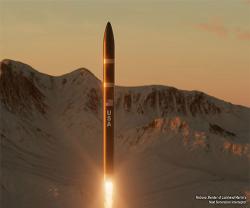Raytheon’s JLENS & MALD-J Decoy Undergo Separate Tests
25.09.2012 North America
A recent U.S. Army and Navy test proved Raytheon’s JLENS can integrate with defensive systems currently in the U.S. Navy's inventory to provide, for the first time, overland cruise missile defense from the sea.
During the test, a JLENS' fire-control radar acquired and tracked a surrogate anti-ship cruise missile target. The track information was passed to sailors via the Raytheon-made Cooperative Engagement Capability (CEC) sensor-netting system. The sailors then fired a Raytheon-made Standard Missile-6 at the target. Initial SM-6 guidance used targeting information provided by the JLENS via CEC to the Aegis Weapon System (AWS) until the SM-6's onboard radar was able to acquire and track the target.
“JLENS has demonstrated its ability to integrate with other components of Naval Integrated Fire Control-Counter Air, significantly expanding the force's cruise missile defense umbrella. Commanders can detect threats shortly after they are launched with JLENS' 360-degree, long-range surveillance capability, while the JLENS integrated fire-control radar enables commanders to more effectively employ weapons like the Standard Missile 6,” said Dean Barten, the U.S. Army's JLENS Product Manager.
Meanwhile, The U.S. Air Force and Raytheon began operational testing of the Miniature Air Launched Decoy Jammer (MALD®-J). After completing a highly successful developmental test phase, the MALD-J team achieved four successful flights in 4 attempts.
MALD-J (photo) adds radar-jamming capability to the basic MALD platform. MALD is a state-of-the-art, low-cost flight vehicle that is modular, air-launched and programmable. It weighs less than 300 pounds and has a range of approximately 500 nautical miles. MALD protects aircraft and their crews by duplicating the combat flight profiles and signatures of U.S. and allied aircraft.
“MALD saves lives by saturating enemy integrated air defense systems, causing them to pursue the wrong target instead of attacking our aircraft. With MALD-J, we are building on this combat-proven decoy to provide the warfighter with even more capability,” said Harry Schulte, Raytheon Missile Systems' Vice President of Air Warfare Systems.
During 2012 test firings, MALD and MALD-J achieved 13 successful flight tests in 13 attempts. More MALD-J flight tests are scheduled for the remainder of the year. On September 6, Raytheon Missile Systems marked the delivery of the first MALD-J to the U.S. Air Force during a ceremony at the company's Tucson, Arizona facility.
During the test, a JLENS' fire-control radar acquired and tracked a surrogate anti-ship cruise missile target. The track information was passed to sailors via the Raytheon-made Cooperative Engagement Capability (CEC) sensor-netting system. The sailors then fired a Raytheon-made Standard Missile-6 at the target. Initial SM-6 guidance used targeting information provided by the JLENS via CEC to the Aegis Weapon System (AWS) until the SM-6's onboard radar was able to acquire and track the target.
“JLENS has demonstrated its ability to integrate with other components of Naval Integrated Fire Control-Counter Air, significantly expanding the force's cruise missile defense umbrella. Commanders can detect threats shortly after they are launched with JLENS' 360-degree, long-range surveillance capability, while the JLENS integrated fire-control radar enables commanders to more effectively employ weapons like the Standard Missile 6,” said Dean Barten, the U.S. Army's JLENS Product Manager.
Meanwhile, The U.S. Air Force and Raytheon began operational testing of the Miniature Air Launched Decoy Jammer (MALD®-J). After completing a highly successful developmental test phase, the MALD-J team achieved four successful flights in 4 attempts.
MALD-J (photo) adds radar-jamming capability to the basic MALD platform. MALD is a state-of-the-art, low-cost flight vehicle that is modular, air-launched and programmable. It weighs less than 300 pounds and has a range of approximately 500 nautical miles. MALD protects aircraft and their crews by duplicating the combat flight profiles and signatures of U.S. and allied aircraft.
“MALD saves lives by saturating enemy integrated air defense systems, causing them to pursue the wrong target instead of attacking our aircraft. With MALD-J, we are building on this combat-proven decoy to provide the warfighter with even more capability,” said Harry Schulte, Raytheon Missile Systems' Vice President of Air Warfare Systems.
During 2012 test firings, MALD and MALD-J achieved 13 successful flight tests in 13 attempts. More MALD-J flight tests are scheduled for the remainder of the year. On September 6, Raytheon Missile Systems marked the delivery of the first MALD-J to the U.S. Air Force during a ceremony at the company's Tucson, Arizona facility.
Previous PostLockheed Wins Apache M-TADS/PNVS PBL Contract
Latest news
Latest events
ISNR Abu Dhabi 2024
21 - 23 May 2024ADNEC Centre Abu Dhabi - United Arab EmiratesEUROSATORY 2024
17 - 21 Jun 2024Paris Nord Villepinte - FranceFarnborough International Airshow
22 - 24 Jul 2024Farnborough - United KingdomMiddle East Special Operations Commanders Conference (MESOC)
02 Sep 2024Aqaba - Jordan






















